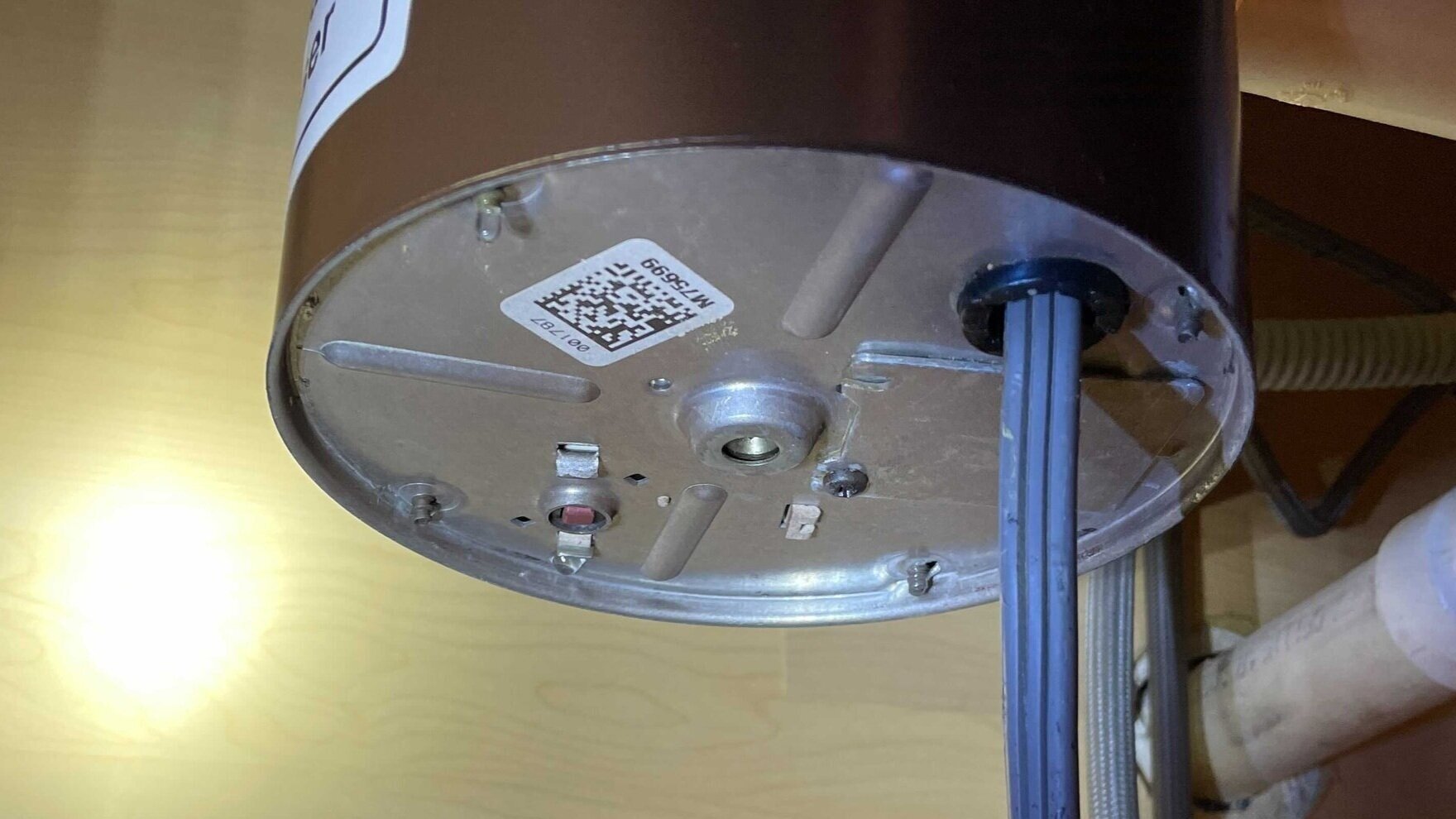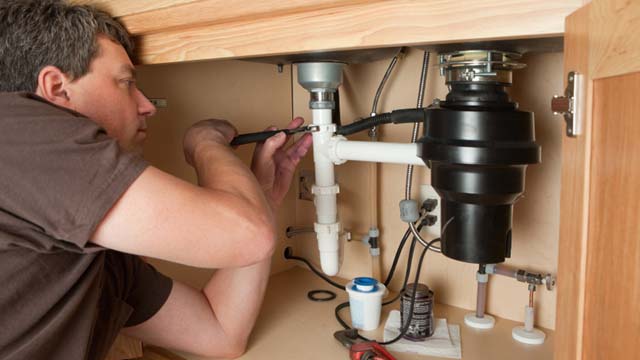Step-by-Step Instructions for Repairing a Leaky Waste Disposal
Step-by-Step Instructions for Repairing a Leaky Waste Disposal
Blog Article
The article below in relation to Why Is My Garbage Disposal Leaking From the Bottom? is extremely insightful. Don't bypass it.

Waste disposal unit are essential kitchen area devices that aid in taking care of food waste successfully. Nevertheless, a dripping waste disposal unit can be a discouraging and untidy issue to manage. The good news is, numerous leaks can be repaired quickly with a few easy steps. In this write-up, we will review how to repair a dripping waste disposal unit effectively.
Introduction
Garbage disposals are set up under kitchen sinks and are developed to shred food waste into smaller sized pieces, enabling it to go through the plumbing system quickly. While these gadgets are normally reliable, leaks can occur gradually because of damage, loose connections, or damages to the system.
Usual Sources Of Leaks in Garbage Disposals
Worn Seals and Gaskets
Seals and gaskets play an important function in stopping water from leaking out of the waste disposal unit. With time, these elements can weaken, bring about leakages around the disposal system.
Loose Connections
The links in between the garbage disposal and the pipes system can end up being loose with time, creating water to leakage out during procedure.
Cracks or Holes in the Disposal System
Physical damage to the waste disposal unit, such as fractures or holes in the real estate, can also cause leaks.
Determining the Source of the Leak
Before trying to repair a dripping waste disposal unit, it is necessary to recognize the resource of the leak. This can normally be done through visual assessment or by carrying out basic tests.
Visual Assessment
Inspect the garbage disposal device carefully for any kind of indications of water leakage. Pay very close attention to locations around seals, gaskets, and connection factors.
Examining for Leaks
One method to check for leakages is by running water via the disposal device and checking for any kind of visible indicators of leakage.
Devices and Materials Needed for Fixing a Dripping Waste Disposal Unit
Prior to starting the repair work process, collect the necessary tools and products, including a screwdriver, flexible wrench, plumbing's putty, substitute seals or gaskets, and epoxy or patching material for fixing cracks or openings.
Step-by-Step Guide to Repairing a Dripping Garbage Disposal
Shut off the Power
Before attempting any type of repair services, ensure that the power to the garbage disposal system is switched off to avoid the danger of electric shock.
Situate the Leak
Determine the exact location of the leakage and identify the reason.
Tighten Links
Make use of a wrench to tighten up any loose links between the disposal device and the plumbing system.
Replace Seals or Gaskets
If the leak is because of used seals or gaskets, eliminate the old components and replace them with brand-new ones.
Patching Splits or Openings
For fractures or openings in the disposal system, usage epoxy or a suitable patching product to secure the damaged area.
Examining the Garbage Disposal After Repair Service
When the repair is full, check the garbage disposal by running water with it to ensure that the leakage has actually been dealt with.
Preventive Upkeep Tips to Stay Clear Of Future Leaks
To stop future leakages, it is vital to perform normal upkeep on your garbage disposal. This consists of maintaining it tidy, avoiding putting non-food things or difficult items down the disposal, and regularly checking for leakages or various other concerns.
Conclusion
In conclusion, fixing a leaking waste disposal unit is a relatively uncomplicated process that can be completed with basic devices and products. By following the steps detailed in this post and practicing preventative upkeep, you can keep your waste disposal unit in good working condition and avoid expensive repair work in the future.
What to Do About a Leaking Garbage Disposal
A leaking garbage disposal often goes unnoticed until you confront a sopping cabinet, a foul-smelling puddle, or an audible drip-drip-drip from the unit. The fix can be frustrating, too, because the leak can stem from a number of components in the system. Fortunately, with a little sleuthing, you can zero in on the leak and—depending on the exact location—stop the icky oozing and repair the component that caused it. Worst case scenario, if it turns out that the garbage disposal must be replaced, installing a new one is a reasonable do-it-yourself task for those with basic plumbing skills. Read on to keep the cash you’d otherwise hand over to a pro.
Prepare to find the leak
Prior to testing the garbage disposal for leaks, unplug it at the wall outlet and turn off the power from the breaker box to prevent electrical shock. Then insert a watertight sink stopper into your sink drain and wipe the unit dry with a clean cloth. In any handy container, mix a few drops of food coloring into a few cups of water, and pour the dyed water onto the sink stopper to help you locate the leak.
Investigate the source
the top, where the disposal meets the sink drain the side, where the dishwasher hose or main drain pipe connects to the disposal or the bottom of the unit Inspect each of these locations while gliding a light-colored rag over the unit; the dyed water will readily show on the rag and reveal the location of the leak. If a leak isn’t immediately apparent, remove the sink stopper and pour a few more cups of dyed water down the sink drain, then check for leaks again. Leaks near the top of the unit are more likely to show themselves while the sink is plugged, while side and bottom leaks are more noticeable while the sink is unplugged.
The metal sink flange that sits directly inside the sink drain is typically sealed around the top with plumber’s putty (a clay-like sealant) and then secured from under the sink with bolts. If the plumber’s putty deteriorates, or the bolts loosen, the flange can no longer form a watertight seal between the sink drain and the disposal—which could cause a leak at the top of the unit.
To reseal the leaky flange, you must first detach the garbage disposal. Start by loosening the screws securing the main drain pipe to the disposal, then loosen the screws in the metal clamp securing the dishwasher hose to the disposal and detach the drain pipe and dishwasher hose from the disposal. Loosen the screws in the mounting ring that connects the disposal to the metal mounting assembly beneath the sink, then pull down the disposal and carefully set it on a clean, dry surface. Loosen the bolts in the mounting assembly with a wrench, then pull down the mounting assembly and set it near the disposal.

I discovered that entry about The Handy Guide To Fixing Your Garbage Disposal Leaking while browsing on the search engines. Sharing is good. You just don't know, you may very well be doing someone a favor. We value reading our article about Garbage Disposal Leaking From Bottom.
Book Your Appointment Report this page